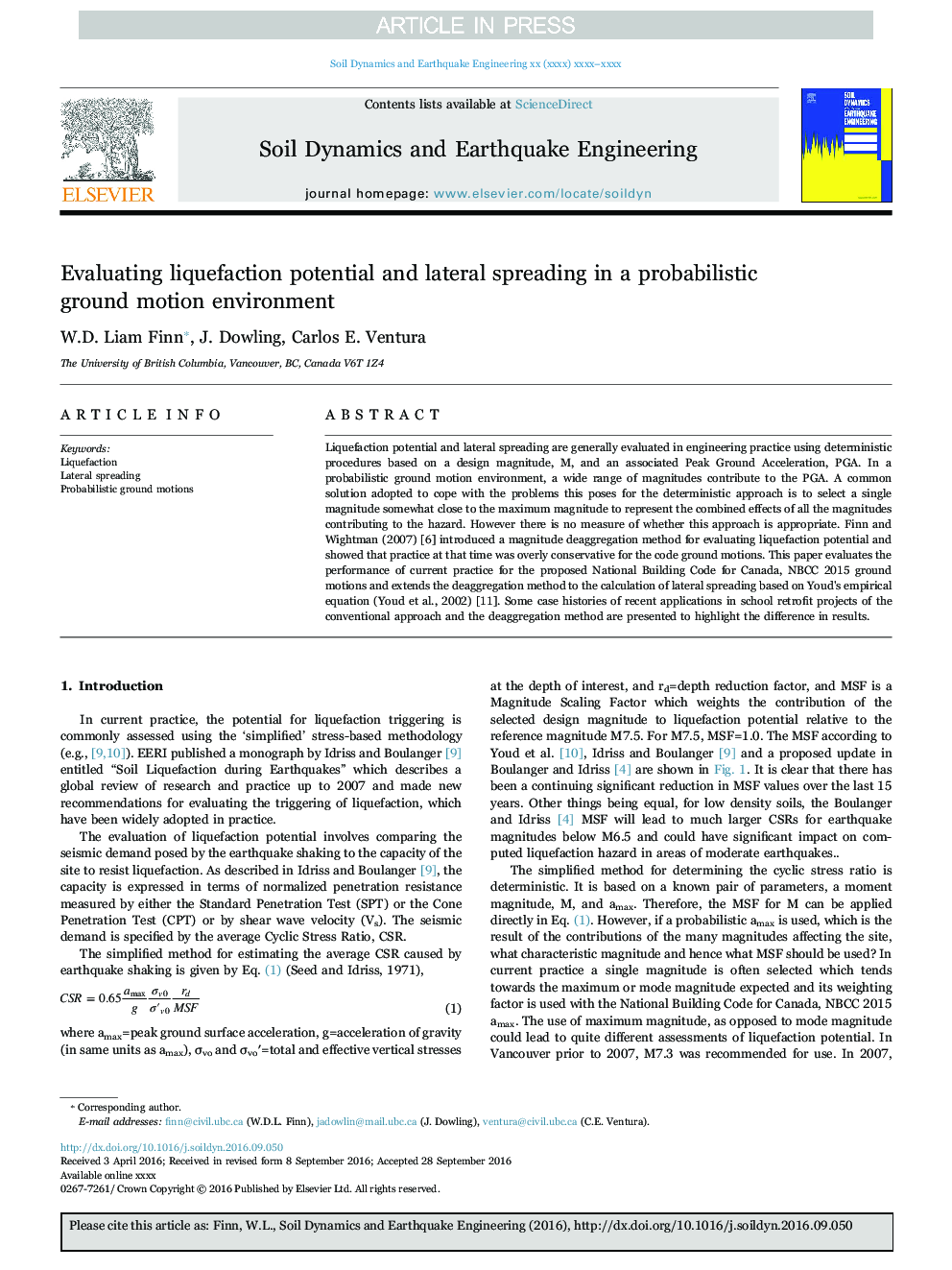| Article ID | Journal | Published Year | Pages | File Type |
|---|---|---|---|---|
| 4927370 | Soil Dynamics and Earthquake Engineering | 2016 | 7 Pages |
Abstract
Liquefaction potential and lateral spreading are generally evaluated in engineering practice using deterministic procedures based on a design magnitude, M, and an associated Peak Ground Acceleration, PGA. In a probabilistic ground motion environment, a wide range of magnitudes contribute to the PGA. A common solution adopted to cope with the problems this poses for the deterministic approach is to select a single magnitude somewhat close to the maximum magnitude to represent the combined effects of all the magnitudes contributing to the hazard. However there is no measure of whether this approach is appropriate. Finn and Wightman (2007) [6] introduced a magnitude deaggregation method for evaluating liquefaction potential and showed that practice at that time was overly conservative for the code ground motions. This paper evaluates the performance of current practice for the proposed National Building Code for Canada, NBCC 2015 ground motions and extends the deaggregation method to the calculation of lateral spreading based on Youd's empirical equation (Youd et al., 2002) [11]. Some case histories of recent applications in school retrofit projects of the conventional approach and the deaggregation method are presented to highlight the difference in results.
Keywords
Related Topics
Physical Sciences and Engineering
Earth and Planetary Sciences
Geotechnical Engineering and Engineering Geology
Authors
W.D. Liam Finn, J. Dowling, Carlos E. Ventura,
